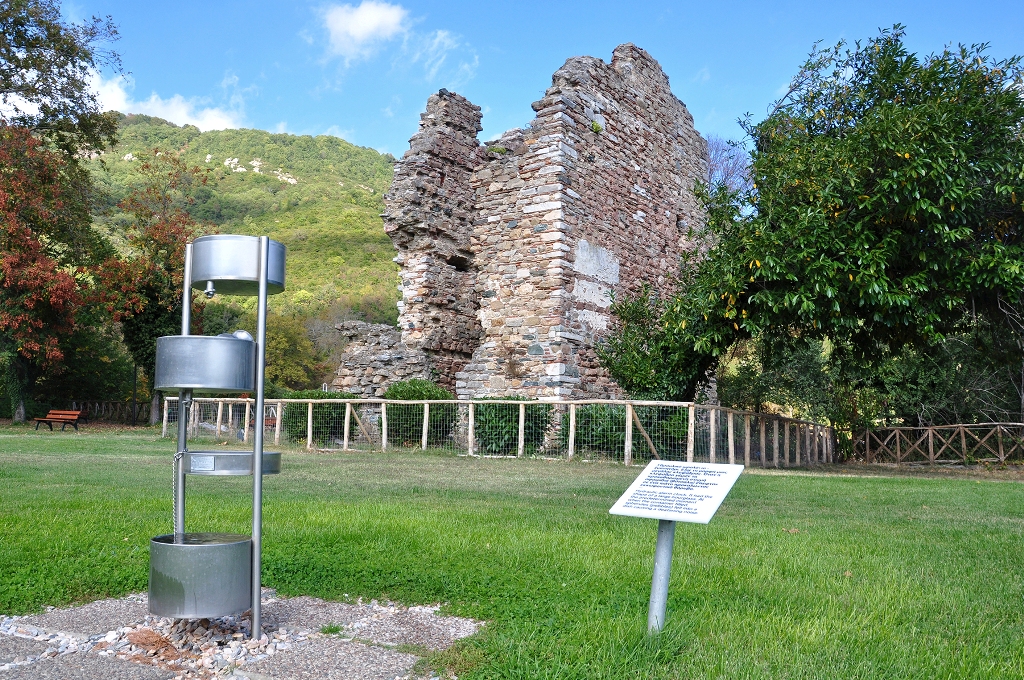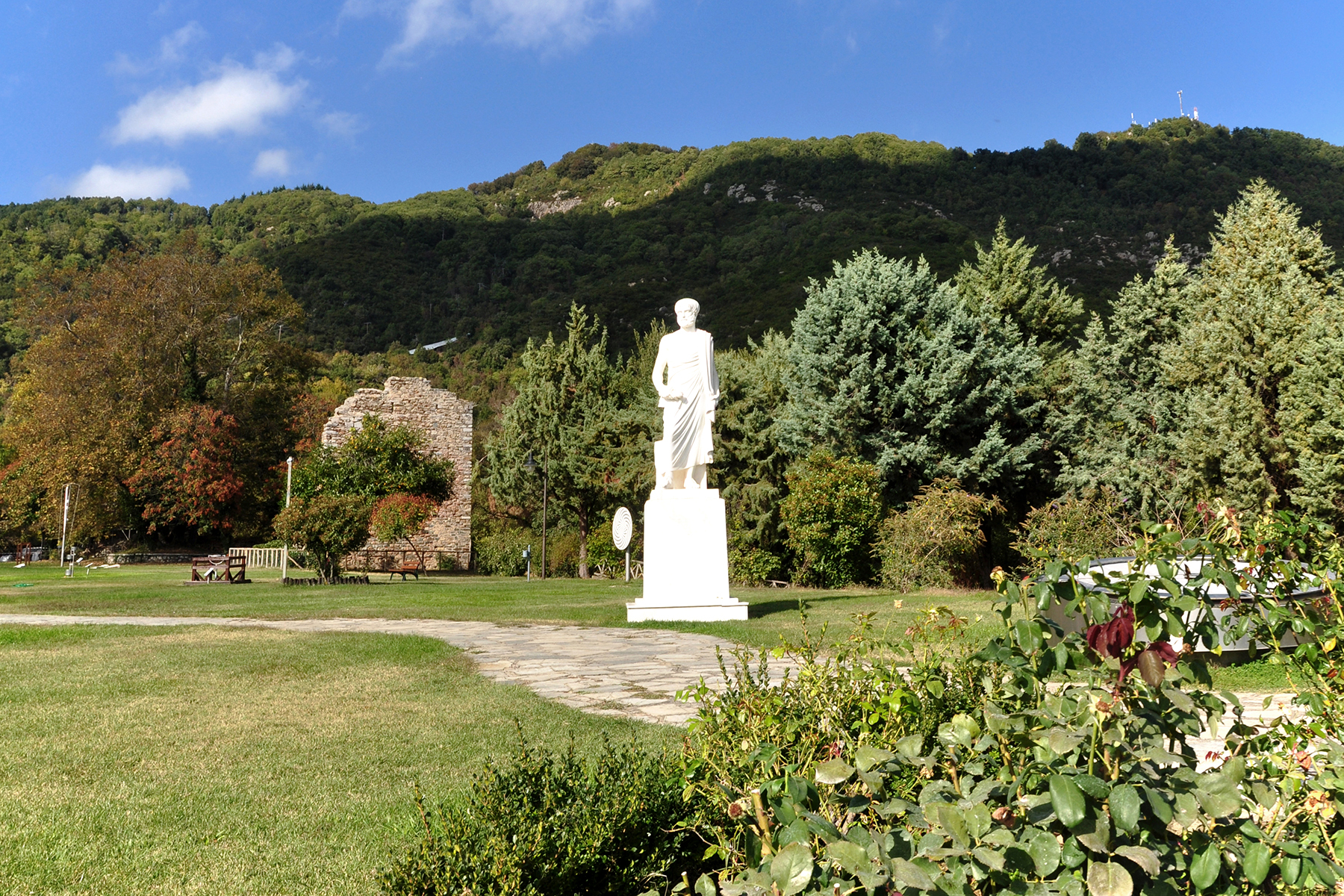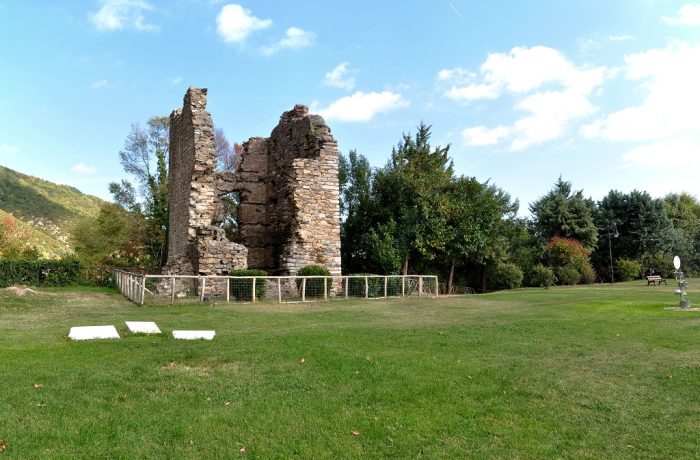The stone tower of Madem Aga, at an altitude of 530 meters, is formerly part of a Byzantine and Ottoman fortified settlement, which is called the ‘Medieval fortress complex of Sidirokafsia’.
The toponym Sidirokafsia was mentioned for the first time in the 9th century. Sidirokafsia existed during the Byzantine period until the second half of the 9th century. It was one of the eight known villages of Halkidiki. During the late Byzantine period, together with the area of Ierissos and Revenikia (today's Megali Panagia), they were the capital of Ierissos or Arabenikia.
Now protected by a fence and surrounded by installations and the statue of Aristotle, the tower is located at Aristotle Park. This tower has a rectangular floorplan with dimensions of 8.30 m. x 7m with a remaining height of about 12 meters. During the Ottoman occupation, the tower was used as headquarters of the settlement and the seat of the Turkish head of this district, Madem Aga ("madem" means ‘iron’ + aga – Turk title for a ruler). In a little grove near the tower are the ruins of another tower-shaped building which is assumed to be the residence of the Madem Aga.






![Petralona Cave | Geological shapes [Reopened]](https://www.visit-halkidiki.gr/wp-content/uploads/2016/09/Petralona-cave-halkidiki-2-170x170.jpg)









